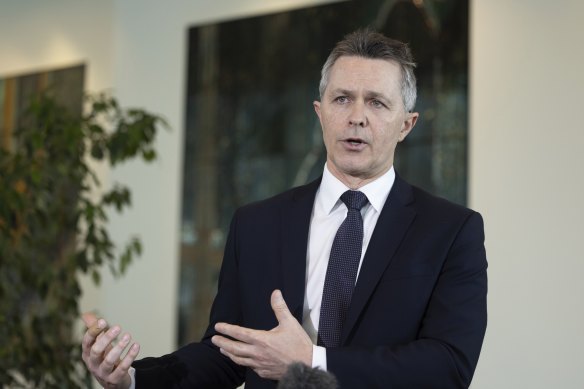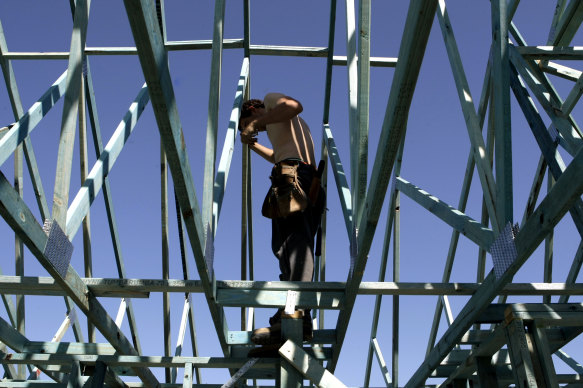The number of NSW schools in which a quarter of the year 10 cohort leaves and never returns for further study has doubled in a decade as state and federal governments try to arrest the rising number of students failing to reach year 12.
Schools in middle-of-the-road suburbs have joined those in poorer parts of the state where dozens of students leave before the final two years of school.
Federal education minister Jason Clare has decried the growing number of Australian students failing to finish their schooling – which evidence suggests will consign them to a lifetime of lower earnings.
Last year, there were 282 schools in which more than one-quarter of their year 10 cohort did not return for year 11 study, Australian Curriculum and Reporting Authority data shows. A decade ago, that figure was 116 schools.
At Cromer High on the northern beaches, 24 per cent of the previous year 10 cohort did not return for year 11 in 2013 but, by 2023, that figure was 32 per cent.
The data does not show if the students left for other schools, got a job, began an apprenticeship or were looking for work.
At Picton High, between Sydney and the Southern Highlands, the proportion of year 10 students leaving the school jumped from 21 per cent a decade ago to 46 per cent in 2023.
“In fact, there is a general trend that we lose almost 50 [per cent] of our students by the end of year 12,” the school’s annual report noted. Parents say some students left for a private school due to demountables and ongoing building works, while others pursued trades.
One Sydney principal, who spoke on the condition of anonymity because they are banned from speaking to the media, said more students were working to simply put food on the table for their families. Other students were leaving because schools were doing a better job of advertising vocational options available, he said.
Data shows enrolments in vocational education offered within NSW public schools has been going down over the past five years, falling to 28,730 students in 2023. It is stable in Catholic schools while private school students grew to 5175 – an increase of 33 per cent.
University of Canberra education researcher Associate Professor Philip Roberts said not all schools offered vocational subjects students wanted to do.
“Those units exist, but the school still has to offer it. It requires extra costs to deliver it and the teacher has to have a corresponding qualification in that certificate themselves,” he said.

Federal Education Minister Jason Clare wants to address the school retention crisis.Credit: Alex Ellinghausen
Across all subjects, he said the statewide teacher shortage had made school less attractive for those contemplating leaving earlier.
“If they can’t have the teachers to teach the subjects, they ask ‘why am I staying for this?’ ”
“Our model of secondary schooling is structured toward university. Historically, university has been linked to higher earning outcomes … but I think we are now questioning if that is true in this climate of a skills shortage.
“As the economy is changing and we have such a skills shortage, you can earn as much in those industries than compared to the professions.”
The state government is negotiating the next school funding agreement with the federal government. The Commonwealth proposes targets for lifting the number of students who finish year 12 by 7.5 percentage points by 2030, compared with 2022 figures.
University of Melbourne schooling systems researcher Professor Glenn Savage said since the 1990s, governments have been trying to work out how to keep more people in school.
“If you look historically, the targets are largely meaningless. We have set multiple targets for year 12 attainment and in most cases, they haven’t been met,” he said.

There has been a surge in young apprentice numbers over the past five years in NSW.Credit: Tamara Voninski
Shocking figures released last year showed one-third of public school children failed to finish year 12. The department says work on improving retention issues has been “incorporated into existing programs under the plan for public education”.
The department spokesman pointed to the latest post-school destination survey, from 2022, which said 91.7 per cent of all leavers were in education, training or employment – the highest level since data collection began.
The NSW legal school-leaving age was raised from 15 to 17 in 2010. An evaluation of that policy two years later by the auditor-general said some students who remained in school disrupted others and wasted teachers’ time.
Students who wish to leave before the age of 17 must have a guaranteed 25 hours’ work per week and be signed off by a principal.
The number of 15- to 19-year-olds in apprenticeships or training in NSW has increased from 27,980 at the end of 2019 to 34,775 at the end of last year, National Centre for Vocational Education Research statistics show.
Start the day with a summary of the day’s most important and interesting stories, analysis and insights. Sign up for our Morning Edition newsletter.